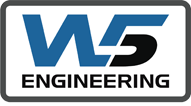Laboratories can be profitable—no doubt about it. But you’ll need to select a suitable market space for your lab first. Some market spaces are more profitable than others and require less costly laboratory equipment. For example, experts project the clinical lab marketplace to reach $288.7 billion by 2028. So, choosing the right market space for your lab is critical.
No matter what marketspace you choose, however, launching a new lab is challenging. You’ll need to generate a solid business plan, determine the right business structure, find financial backing, and select a lab location. You’ll also need to research the regulatory regimes governing your lab. For example, if you’re starting a pharmaceutical lab in the US, you may need to comply with the FDA’s Current Good Manufacturing Practice (cGMP) regulations.
The most critical decision you need to make after selecting your market space is choosing what kind of lab to start. Numerous types of labs exist, including computer labs, language labs, water treatment labs, and energy labs, as well as dark rooms, forensic labs, genetic labs, aerospace and automotive labs, just to name a few.
When starting a lab, you must match the right laboratory equipment to the type of lab you’re starting. For example, launching a lab for chamber cultures requires sterile areas, autoclaves, freezers, incubators, shakers, and centrifuges. You also need to think carefully about how to optimize lab work to produce the best results. These activities are crucial for your lab’s success.
Below we describe five lab types, the type of laboratory equipment each type needs, and any tools you’ll need to optimize lab work.
Medical/Clinical labs help physicians and hospitals diagnose, treat, and manage patients, they can also be used as research facilities for places like universities.
These labs provide a wide range of services, such as examining tissues, and fluid samples via biopsy (anatomical pathology lab) and analyzing urine, blood, and culture products (clinical pathology labs).
These labs are part of today’s healthcare technology marketplace. Medical/clinical labs need laboratory equipment such as disinfectants, hot plates, test tubes, stirrers, pipettes, cuvettes, dispensers, and beakers. They also need clinical chemistry, hematology, and blood bank analyzers, cryostats, mass spectrometers, and industrial lab ovens.
These labs are isolated places with low concentrations of airborne organisms, vaporized particles, and other impurities. They keep impurities from materials and techniques being processed or studied within. Clean rooms are critical in scientific studies, industrial manufacturing, life sciences, battery manufacturing, semiconductor device production, and biotechnology processing.
Clean rooms use ULPA or HEPA filters and turbulent (nonunidirectional) or laminar (unidirectional) air flow principles. They also use a wide variety of laboratory equipment to achieve a “near zero” particle environment. Equipment includes laminar flow hoods, particle counters, nitrogen spray guns, fume hoods, air showers, industrial ovens, fume extractors, and desiccator cabinets.
Companies use these labs to study various fields and markets, ranging from water treatment and material sciences to semiconductor and automotive industries. They also use them to conduct large-scale experiments, develop prototypes for industrial-scale production of new products, produce display materials for thin panel displays, and generate materials for storing energy, among other things.
Industrial labs serve a broad range of purposes, including aiding and facilitating R&D in semiconductor technology and water treatment and purification processes. General lab equipment includes pipettes, scales, centrifuges, Bunsen burners, freezers, hot plates, incubators, coolers, stirrers, and water baths. Industrial ovens also are critical in these types of laboratories.
Electronics testing labs help determine the cognition of devices and components. These labs use equipment to stimulate and measure a response from a device or a component. Once they take measurements, these labs then analyze those results. Each step in the process may involve a broad range of tools and equipment.
An electronics laboratory equipment list often includes equipment like multimeters, oscilloscopes, power supplies, function generators, soldering irons, and precision hand tools. The primary measurement tool used for observing a waveform is the oscilloscope. A standalone function generator is also essential equipment in an electronics lab.
Wet labs analyze and test various liquids, such as drugs, chemicals, and other types of biological matter. These labs use primary liquids in analysis. Examples include characterizing enzymes in biology, titration in chemistry, and diffraction of light in physics. Dry labs concentrate more on applied or computational mathematical analyses using computer-generated models or simulations than liquids.
Dry labs need electronic laboratory equipment like computers and other digital devices. Plus, they need a proper temperature and humidity control system. Wet labs have more intense design requirements. They feature sinks and other fixtures for working with liquids, laboratory ovens, centrifuge rotors, piped-in hot and cold water, and lab benches that can easily be cleaned and resist bacteria and chemicals.
In addition to the right lab equipment, you’ll need to consider the rental cost or purchase price of the lab’s location and any required extras, such as maintenance, employee salaries, and administrative overhead.
Lab safety is critical in any lab environment. For example, if you’re processing volatile products or combustible materials, you’ll need Class A laboratory ovens. Make sure your lab also has fire extinguishers, fire blankets, emergency exits, water baths, and protective equipment. Lab safety is all about doing the little things right. So, doing your due diligence in this area will keep staff safe and your lab up and running.
Launching a new laboratory can be profitable. But it’s also a challenge. So, if you’re interested in starting a new lab, research the marketplace thoroughly, develop a solid business plan, secure sufficient funding, find the right location for the lab, and determine if any government regulatory regimes oversee the type of lab you’re starting. Above all, make sure you get the right laboratory equipment.


